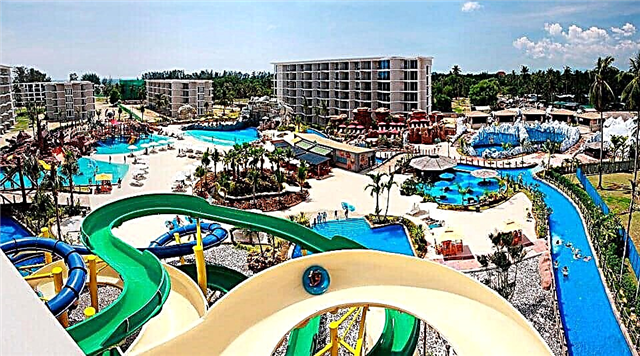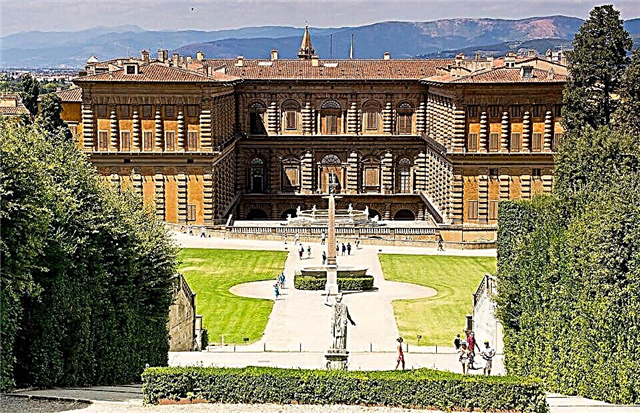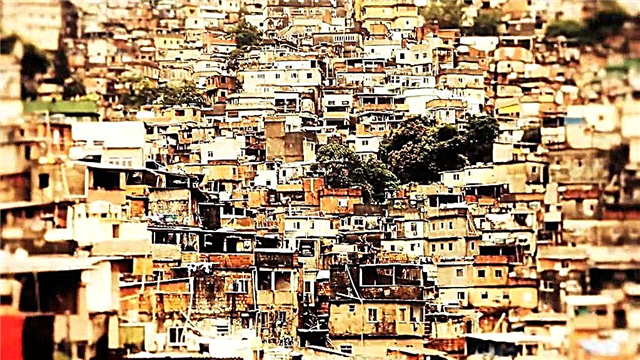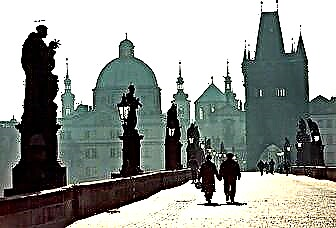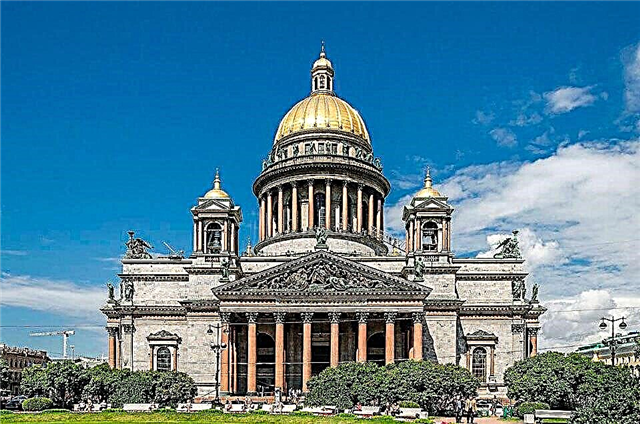Petersburg is a real open-air museum, an architectural and cultural treasury, where you can find almost all styles of art in all kinds of combinations. It is hardly possible to put a list of the sights of the old capital on one sheet. If you visit this city as part of an excursion program in a company of an experienced type, then planning the route of your visit will not be too difficult. But what is worth seeing in St. Petersburg in 3 days if you are a free tourist?
1 day
It is best to start your immersion in the sights of the capital from an iconic place, namely from St. Isaac's Square, in the area of which quite a lot of architectural monuments are concentrated.
Mariinsky Palace

The first thing you pay attention to when you find yourself on St. Isaac's Square is the Mariinsky Palace, which was built on the initiative of Nicholas I as a gift for his daughter. This palace was planned primarily not as an imperial residence, but as a house for a married couple, therefore, not classical marble, but sandstone was used as the main material.
It is noteworthy that even after the death of its eminent owners, the palace more than once turned out to be a place where political scandals unfolded. The palace is located at Isaakievskaya Square, 6. It can only be viewed from the outside, while visiting the inner premises is not provided.
We recommend reading what to see in St. Petersburg:
Monument to Nicholas I

This monument is located between the Mariinsky Palace and St. Isaac's Cathedral, but not in their shadow. This colossal statue was installed after the death of the emperor according to the design of the famous architect Montferrand and sculptor Klodt at that time. The equestrian statue, standing on a pedestal, adorns St. Isaac's Square today.
Hotel "Astoria"

This hotel was built on the site of a former mansion that belonged to the Lvov family. At the beginning of the twentieth century, the British acquired the ownership of the land, and they decided to create a hotel in the Art Nouveau style. The name was chosen, imitating the New York hotels, which belonged to the Astors.
This hotel has been the focus of historical events more than once. So, it was in this building that Hitler planned to celebrate the victory over Leningrad. Today this five-star hotel continues to function. It is located at Bolshaya Morskaya Street, 39.
Saint Isaac's Cathedral

It is worthwhile to allocate at least an hour to visit this monument. This largest Orthodox church in St. Petersburg and one of the tallest domed buildings in the city has the status of a museum. It was built in the style of late classicism according to the project of the young and ambitious at that time French architect Auguste Montferrand.
This temple is a work of art, from the steps of the main façade to the wall cladding. It is located at Isaakievskaya Square, 4. The cathedral is open for sightseeing visits from 11:30 to 18:00. A special point is a visit to the colonnade, which offers an impressive view of the city.
"House with Lions"
The Lobanov-Rostovsky House will be especially interesting for those who are passionate about the architecture of classicism. Initially, it was assumed that during the design, the emphasis would be on the richness of the decoration, but later Montferrand, during the beginning of the actual work, decided to rely on monumentality. The House with Lions owes its name to the sculptural composition of the same name, carved out of marble. The house is located at Isaakievskaya Square, 2.
Oak planted by Emperor Alexander II

It is worth crossing the Admiralteisky Prospekt, and you will find yourself in the Alexander Garden, which is included in the list of objects that are under the protection of UNESCO. Initially, it was conceived as one of the components of fortifications, but gradually this need disappeared, and a boulevard appeared on the site of the former field, and then a garden, which now occupies more than 10 hectares.
There is also an oak tree planted by the emperor himself. However, this is where the garden got its name. The garden is open to visitors around the clock.
Horse Guards Manege

Previously, the building, built in the style of classicism, held training sessions for the Cavalry Regiment of the Imperial Guard, but today this building, decorated with antique columns, has become one of the most demanded exhibition spaces in the Northern capital.
The exhibition hall is located at 1. Isaakievskaya Square. It has undergone a major overhaul and is a venue for various exhibitions, seminars and lectures, one way or another related to the problems of art.
Senate and Synod Buildings

If you continue to move to the left of the Alexander Garden, then you can go to the buildings of the Senate and Synod, which were used as buildings of two government bodies of the same name. The buildings were erected in the Empire style and are separate buildings, but the decision was made to stylistically unite them with the help of a triumphal arch.
Such an architectural solution was supposed to demonstrate the unity of church and law. Today, both buildings house state institutions, as well as the chambers of the patriarch, and therefore only external inspection of the objects is provided. The buildings of the Senate and Synod are located at 1-3, Decembrists proezd.
Bronze Horseman

One of the main architectural landmarks of the Senate Square is the monument to Peter the Great, better known as the Bronze Horseman. He owes this name to the eponymous poem of Pushkin.
Empress Catherine II took an active part in developing the concept of the future monument, who at that time was in correspondence with French enlighteners. The equestrian statue of Peter the Great stands on an imposing pedestal - the Thunder Stone, which was brought from the vicinity of the former capital.
Admiralty

The modern building, which has retained its first name - the Admiralty, is located on the site where, even under Peter the Great, there were shipyards built according to his own drawings. Here not only ships were laid, but various materials were also delivered. The building was built in the classicism style and crowned with the famous ship.
The first ship was cast by a Dutch master, and all the variants of gold coins that existed in the empire at that time were placed in a casket under it. Today the text of the Constitution is kept there. The Admiralty is located at 1-2 Admiralteyskiy proezd. Only an external inspection is possible, since today the headquarters of the Russian Navy is located there.
Hermitage, Winter Palace

It is worth allocating the most time to visit the Hermitage, since, according to rough estimates, it will take about eight years to get around all the halls of the museum. Therefore, it is worth knowing in advance about the most popular halls and planning their visit based on personal preferences.
It should be noted that the modern Hermitage began with a chain of Winter Palaces, which were erected under various monarchs, starting with Peter the Great. It was only under Catherine II that the first building of the Hermitage proper appeared, that is, “a place for solitude”, which the Empress decided to decorate with various canvases.
Today, the museum complex includes the Winter Palace, the Hermitage Theater, the Large and Small Hermitages, as well as the New Hermitage, and this is not counting additional buildings. In the expositions of the museum you can find works of art, the first of which date back to the Stone Age.
The main museum complex is located at 2, Palace Square.Most museums are open from 10:30 am to 6:00 pm, except for the Winter Palace of Peter the Great, which closes an hour earlier. Monday is a day off. A standard adult ticket, which allows you to visit all the buildings of the complex, costs 400 rubles.
Palace Square with the Alexander Column

This architectural ensemble began to form in the second half of the eighteenth century. The main dominant feature was the Winter Palace, whose facade overlooks the square. Palace Square is closed on all sides by buildings, the main of which are the building of the headquarters of the Guards Corps and the General Headquarters.
In the center of the square is the Alexander Column, made of red granite. It retains its status as the tallest solid rock column. It is crowned with the figure of an angel made of pink granite. It is noteworthy that during the manufacture of the statue, the sculptor relied on the external appearance of Alexander I.
General Staff Building

The chief architect who worked on the General Staff building was Carlo Rossi. It was he who created and implemented the project of two wings of the complex, which were connected with the help of an arch dedicated to the victory over the French in 1812.
For almost two centuries, this building housed various departments, at the end of the twentieth century the eastern wing was transferred to the Hermitage, and today museum collections continue to be located there. The main headquarters is located at Nevsky Prospect, Palace Square, 6/8. The visiting hours correspond to the opening hours of the other components of the Hermitage complex.
Winter groove

Winter groove is considered one of the most beautiful and romantic places in the Northern capital. A small canal connecting the Neva and Moyva, according to legend, appeared during the time of Peter the Great along with the city itself. And its name appeared due to the fact that the canal passed by the Winter Palace.
Tourists come here mainly for the unique arch-passage that connects the Great Hermitage and the Hermitage Theater. Although in addition to it, a pair of wooden bridges - Winter and Hermitage, were also thrown across the groove, however, a stone structure was subsequently erected in the place of the latter.
Rostral columns

Through the Winter Canal you can get to the embankment of the Neva and go to the Spit of Vasilyevsky Island, where the Rostral columns are located. They were originally used as lighthouses. Inside each column there is a staircase that leads to the platform that crowns the summit.
There they lit the lights - first with oil, then gas. Columns are called rostral, since the main element of the decor is the rostra - that is, the bows of the ships. As a rule, these are trophy rostra made of copper. At the foot of the columns there are sculptures - male and female figures.
Stock Exchange Building

This building is the central architectural dominant of Vasilievsky Island. The first projects appeared at the time of Peter the Great, but the actual opening of the functioning building took place in the post office a century later.
Outwardly, the Exchange came out extremely pompous and in the style of the temples of antiquity that adorned Ancient Greece. All the same columns, a high platform at the base and sculptural compositions. True, the Exchange lost its paramount importance pretty quickly.
Today, there is a modern oil exchange, and therefore only an external inspection of the building is possible. The exchange is located at 4 Exchange Square.
Day 2: Drive to Peterhof

A whole day should be allocated for a trip to Peterhof, but even so there is no guarantee that it will be possible to inspect in detail all the buildings that are located on its territory. This complex is also often called the Russian Versailles and deservedly called it.
Its construction was initiated by Peter the Great after the victory in the Northern War. Peterhof consists of two parts - New Peterhof, where most of the sights are concentrated, and Old Peterhof.
Peterhof is a real city within a city. On its territory are located imperial residences, parks and fountains, which are the subject of his special pride. In addition, the complex also houses a number of museums dedicated not only to history or art, but also to fountain and maritime affairs. Each component of the complex operates according to its own schedule and has its own admission price.
Peterhof is located at 2, Razvodnaya Street.
Day 3
As a starting point, you can choose the Kazan Cathedral, which simply cannot be confused with anything else or missed.
Kazan Cathedral

It is well known that during the construction of the Kazan Cathedral, St. Peter's Cathedral in Rome was taken as a basis, which made a strong impression on Emperor Paul. In the appearance of the Kazan Cathedral, one can trace the traditional attributes of this Italian structure - a huge dome and graceful column wings that embrace the square.
The Kazan Cathedral has always had exceptional significance not only in the religious - although it is here that the icon of the Kazan Mother of God is kept, or in the architectural one - although the cathedral turned out to be perhaps the most colorful building of St. Petersburg, but also in the general historical sense. The cathedral is located at Nevsky Prospekt, 25. You can visit it from 7:00 to 20:00. Admission is free, since the Kazan Cathedral is a functioning temple.
Savior on Spilled Blood

The long embankment of the Griboyedov Canal stretches from the Kazan Cathedral. If you move along it, you will definitely find yourself at the Church of the Savior on Spilled Blood, which is considered the most beautiful in Russia. Despite its more than bright and magnificent design, the temple was erected in memory of the successful attempt on the life of Emperor Alexander II.
This “gingerbread house” stands out very strongly in the general architectural canvas of the former capital, and it is simply impossible to miss it: mosaics, jewelry enamel, marble floors and rich decoration with gems. The temple is located at the embankment of the Griboyedov Canal, 2B. It works from 10:30 am to 5:30 pm.
Field of Mars

Initially, the territory in the vicinity of the Summer Garden was called Tsaritsin's Meadow and was used mainly for military parades. There were also monuments to prominent commanders, although then they were moved. Later, the field was named by analogy with the Champs de Mars in Paris and they began to organize festivities on its territory.
The Field of Mars was formed as a memorial complex after the 1918 revolution. Subsequently, not only the victims of political strife, but also the leaders of the Bolshevik Party began to be buried here. In the center of the complex today is the Eternal Flame. Field of Mars is located on the 1st Admiralty Island. The entrance to its territory is free and possible around the clock.
Suvorov Square
Through the Field of Mars you can go to Suvorovskaya Square, which is considered one of the main squares in the historical part of the city. It forms a single architectural ensemble with the Marble Palace, the monument to Suvorov and the Trinity Bridge.
Peter-Pavel's Fortress

For a long time the Peter and Paul Fortress was a kind of core of St. Petersburg. It was from the architectural ensemble of this citadel that the capital began. Despite its fortification properties, the fortress never became a direct participant in hostilities and gradually turned into a prison for the most eminent criminals.
Every day a flag is raised over the Peter and Paul Fortress, and at noon you can hear the cannon shot of the local bastion. The Peter and Paul Fortress is located on Zayachy Island. It is open from 8:30 am to 9:00 pm.
Monument to "Guarding"

The monument to the sailors of the destroyer of the same name was supposed to perpetuate the feat of the people who fell during the Russian-Japanese war, which destroyed most of the Russian fleet. The monument depicts the moment when water begins to flood a sinking ship.
According to the original idea, this monument was supposed to become a fountain, and during the grand opening, the water did flow, however, this destroyed the monument, and it was decided to turn it off. It is noteworthy that the monument "Guarding" is the only sculptural composition of the city, made in the style of pure Art Nouveau. The monument is located on Kamenoostrovsky Prospekt, in the Alexander Park.
Kshesinskaya mansion

The mansion is built in the Art Nouveau style with all its characteristic features: asymmetric general silhouette, different sizes of walls and windows, contrasting building materials - red and gray granite. This mansion was built at the beginning of the twentieth century for the prima ballerina of the Mariinsky Theater. Soon it turned into the center of the capital's cultural and social life.
True, at the very beginning of the 1918 revolution, the ballerina left her home. It is noteworthy that it was in this building that the famous Russian variation on the theme of the adventures of Sherlock Holmes was filmed. The prima ballerina's mansion is located at Kuibyshev Street, 2-4. At the moment, the building houses the Museum of the Political History of Russia. It is open from 10:00 to 18:00.
Cathedral Mosque

The Cathedral Mosque is the largest northern mosque in Europe. This impressive architectural monument appeared at the beginning of the twentieth century and is an example of northern Art Nouveau, although it is made in accordance with the traditions of Muslim architecture.
The Timur Mosque, which is located in Samarkand, was used as a model. The building itself was built of Finnish stone, and majolica, gray granite and stalactites were used for decoration. The mosque is located at Kronverkskiy prospect, 7. The mosque is active, so those who do not profess Islam can view it only from the outside.
Summer garden

This garden complex is part of the Russian Museum. It was founded by Peter the Great, but later many eminent architects and sculptors worked on this monument of gardening art. From the very beginning, the garden was conceived as a summer residence for representatives of the royal family, and therefore the Versailles complex in Paris was taken as a model.
The Summer Garden was not so large-scale, but, nevertheless, it was really impressive. It is located at the Fontanka River Embankment, 1. The garden is open to the public from 10:00 to 22:00. The entrance to its territory is free.
Mikhailovsky castle

This architectural monument was built in the style of romantic classicism according to the project of Bazhenov. The castle owes its name to the Archangel Michael, who is the patron saint of the Romanov dynasty. However, this building was called a castle only because of the desire of Paul I, who wanted to build his own medieval palace. The Mikhailovsky Castle is considered one of the brightest symbols of the Pavlovsk era.
The castle is located at Sadovaya street, 2. At the moment it is part of the complex of the Russian Museum. It is open from 10:00 to 18:00 on all days except Thursday (opening hours 23:00 to 21:00) and Tuesday, which is a day off.
Mikhailovsky Garden

Mikhailovsky Garden is a unique example of the fusion of French and English landscape styles. Its layout has been adjusted for more than a hundred years, hence the stylistic heterogeneity.
The hallmark of the garden is its canals, which are combined into a complex water system using overhead and underground passages. Today the Mikhailovsky Garden is part of the Russian Museum complex. It is located on the embankment of the Griboyedov Canal, 2. The entrance to the garden is free.



